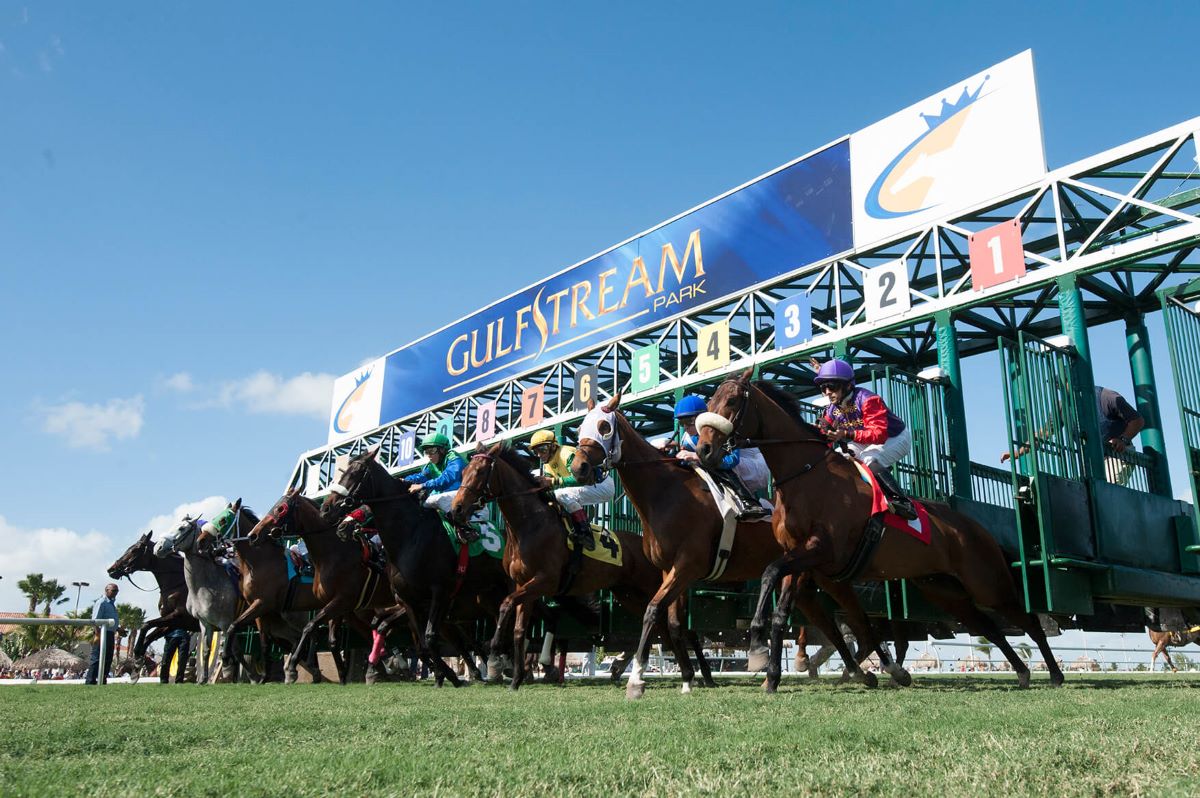Gulfstream Park wasted little time in between races on Wednesday, setting a novel precedent at the South Florida track in starting races as close to the listed post times as possible.

On the track’s opening day, Gulfstream Park officials made a concerted effort to eliminate what’s known as “post-time drag.†That’s the lag time between a race’s scheduled post time and the actual time the horses spring from the starting gate. Gulfstream Park is notorious for its post-time drag extending to five minutes or longer.
It was routine seeing the “minutes to post†sign read “0†– as you were seeing horses slowly meandering to the starting gate. Often times, simulcast viewers would tune in to a given Gulfstream Park race, see “0 Minutes to Post,†and view horses just arriving on the track.
This affects bettors across the board – pun intended. Knowing this was baked into the betting equation for Gulfstream races, horseplayers knew they had at least five extra minutes to get their bets down. And tracks encouraged post-time drag as a way to entice more wagering. After all, extra time means extra bets, right?
Post-Time Drag Does Affect Handle — Negatively
Well – not really. At the same time, Gulfstream’s post-time drag wreaked havoc on the industry’s ability to synchronize starting times at tracks across the country. Other tracks staggered their starting times, allowing bettors to find action at multiple tracks via simulcast. Gulfstream’s seemingly cavalier attitude toward post times complicated that process.
It also caused drag at other tracks across the country. Those tracks, seeing Gulfstream’s races going off five, six, or even seven minutes late, incorporated their post-time drag in response. The end result? Nobody’s races went off on time.
Aidan Butler, the newly minted COO of 1/ST Racing and the architect of the change, dismissed the idea that post-time drag boosted handle. The former head of California racing for The Stronach Group, Butler said eliminating post-time drag enhances every element of horseracing.
Punctuality Becomes Part of the Process
“I don’t believe what they were doing was productive,†he told Thoroughbred Daily News. “All that it ended up doing was causing confusion. We all want horse racing to be taken super seriously and as a really good wagering sport, and an enjoyable thing to be involved with. Then all these things happen across the industry, and I’m not just talking about post times that are a little bit rinky-dink. I don’t know how else to describe it. It’s not what you would find at an A-class sporting event.â€
Gulfstream didn’t just rely on its chief to get the message across. It used its various voices to get into horseplayers’ heads that races would start on – or near – post time. Jason Blewitt, the track’s racing analyst and simulcast host, spent much of his Wednesday Twitter time mixing time updates with his racing picks. The updates were meant to train bettors to get their wagers down earlier than they usually did.
Bright & clear at 9:30 am on this opening day @GulfstreamPark. We run 10 today and post time is a “firm†12:35 pm ET. Couldn’t be any nicer nor the grounds more pristine. Want to thank everyone again for supporting this circuit year-round. 👊ðŸ»ðŸ¤˜ðŸ»ðŸ˜ŽðŸŽ pic.twitter.com/rkAiDOZCLD
— Jason Blewitt (@jasonblewitt30) December 2, 2020
“No drag. Make your wagers accordingly,†read one tweet.
“Just 3 MTP – loading field at 0 MTP – to this GP 4th. I like Omnia although 7-1 Nationalist might not have liked a wet track last time,†read another.
Off and running at 12:35. Nice.
— Jason Blewitt (@jasonblewitt30) December 2, 2020
The Jockey Club promptly commended Gulfstream’s efforts to eliminate post-time drag. In a release, the Jockey Club said “not only does post time drag frustrate bettors, but it also has a negative impact on handle.â€
Building Models Designed to Tear Down Post-Time Drag
The Jockey Club cited a McKinsey & Company study where the consulting firm created models illustrating the harmful effects of post-time drag. At the 2017 Round Table Conference on Matters Pertaining to Racing, McKinsey’s Ben Vonwiller discussed how McKinsey’s models illustrate the importance of race scheduling between different tracks.
The models show that a synchronized racing schedule without significant post-time drag could produce handle increases of $400 million annually throughout American racing. That’s presumably through the coordination of track schedules that enhance betting opportunities for simulcast viewers.
Gulfstream’s opening day handle checked in at $5,150,348 for its 10-race Wednesday card. While that’s a significant drop from last year’s 10-race opening day handle of $7,217,692, comparing the two is apples and oranges. Last year’s Championship Meet opened on a Friday and didn’t take place during a pandemic.
Think this GP 5th is my favorite race here today. I went with The Angry Man (puts me in the mood for some Billy Joel.) Went 4-1-8 in this spot. Rainbow guarantee is $50k. And friendly reminder that the horses will load at 0 MTP – NO DRAG!
— Jason Blewitt (@jasonblewitt30) December 2, 2020











